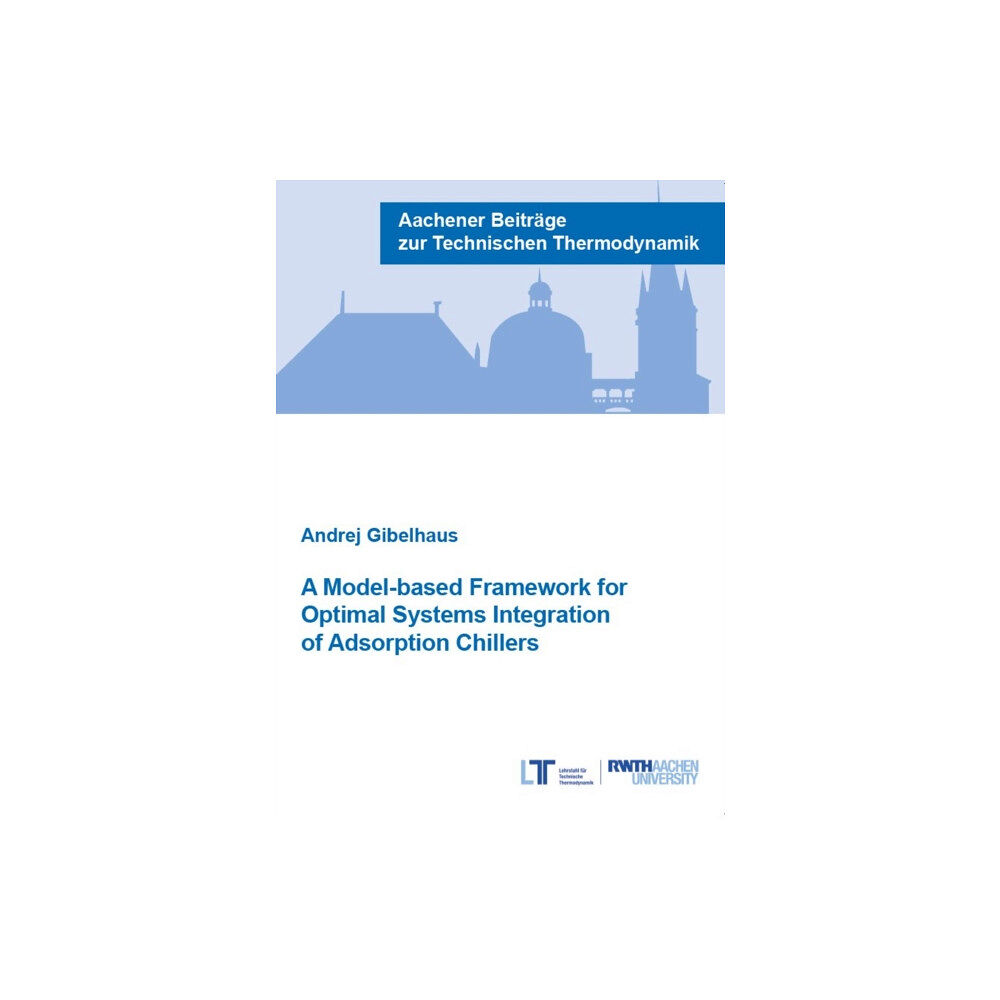- Hem
- Böcker
- Kurslitteratur
- Teknik, Industri & IT
- A Model-based Framework for Optimal Systems Integration of Adsorption Chillers (häftad, eng)

A Model-based Framework for Optimal Systems Integration of Adsorption Chillers (häftad, eng)
The global demand for cooling increases and poses a challenge for the stability of electrical grids and the emission targets. Thermally-d...
- Fri frakt
Produktbeskrivning
The global demand for cooling increases and poses a challenge for the stability of electrical grids and the emission targets. Thermally-driven adsorption chillers can meet this challenge by substituting electricity with thermal energy. However, although adsorption chillers are primarily driven by thermal energy, practical experience shows that the electricity savings often hardly compensate the electricity demand of the auxiliaries, such as pumps and fans.
Thus, smart systems integration is crucial. Systems integration of adsorption chillers is challenging due to several features: (1) intrinsic dynamics; (2) close interaction between various system components; and (3) strong coupling of design, control, and operating conditions.
These features lead to a variety of degrees of freedom, which make it difficult to use simple design and control rules for systems integration.
To move towards optimal systems integration of adsorption chillers, this thesis provides appropriate models and methods. First of all, a model of an adsorption chiller is developed, which is accurate enough to consider quantities needed on system level, but also computationally sufficiently efficient for model-based optimizations.
To demonstrate the model accuracy, the model is calibrated and validated for two types of adsorption chillers, a lab-scale one-bed adsorption chiller and a commercial two-bed adsorption chiller.
Subsequently, the presented model is used for two areas of systems integration: the integration in hybrid systems and the integration within the auxiliaries.
To exemplify the integration in a hybrid system, an adsorption chiller is integrated into a CO2 vapor compression cycle to efficiently provide refrigeration with natural refrigerants only. The exemplified integration identifies a significant potential for energy savings, which can be fully exploited by optimal design and control of the hybrid system.
The demonstrated integration in hybrid systems is also an example for a conceptual integration, which quantifies the potential of a specific application.
To integrate the adsorption chiller within the auxiliaries, an optimization-based method is presented for detailed sizing and control of all system components including auxiliaries.
The presented method is demonstrated for a solar-thermally-driven adsorption chiller system and determines both, an energetically and an economically optimal design and control. In summary, the thesis provides a comprehensive framework for optimal systems integration of adsorption chillers: from model validation over conceptual integration to detailed design and control.
| Format | Häftad |
| Omfång | 177 sidor |
| Språk | Engelska |
| Förlag | Verlag G. Mainz |
| Utgivningsdatum | 2021-07-06 |
| ISBN | 9783958864061 |
Specifikation
Böcker
- Häftad, 177, Engelska, Verlag G. Mainz, 2021-07-06, 9783958864061
Leverans
Betalning
Specifikation
Böcker
- Format Häftad
- Antal sidor 177
- Språk Engelska
- Förlag Verlag G. Mainz
- Utgivningsdatum 2021-07-06
- ISBN 9783958864061
